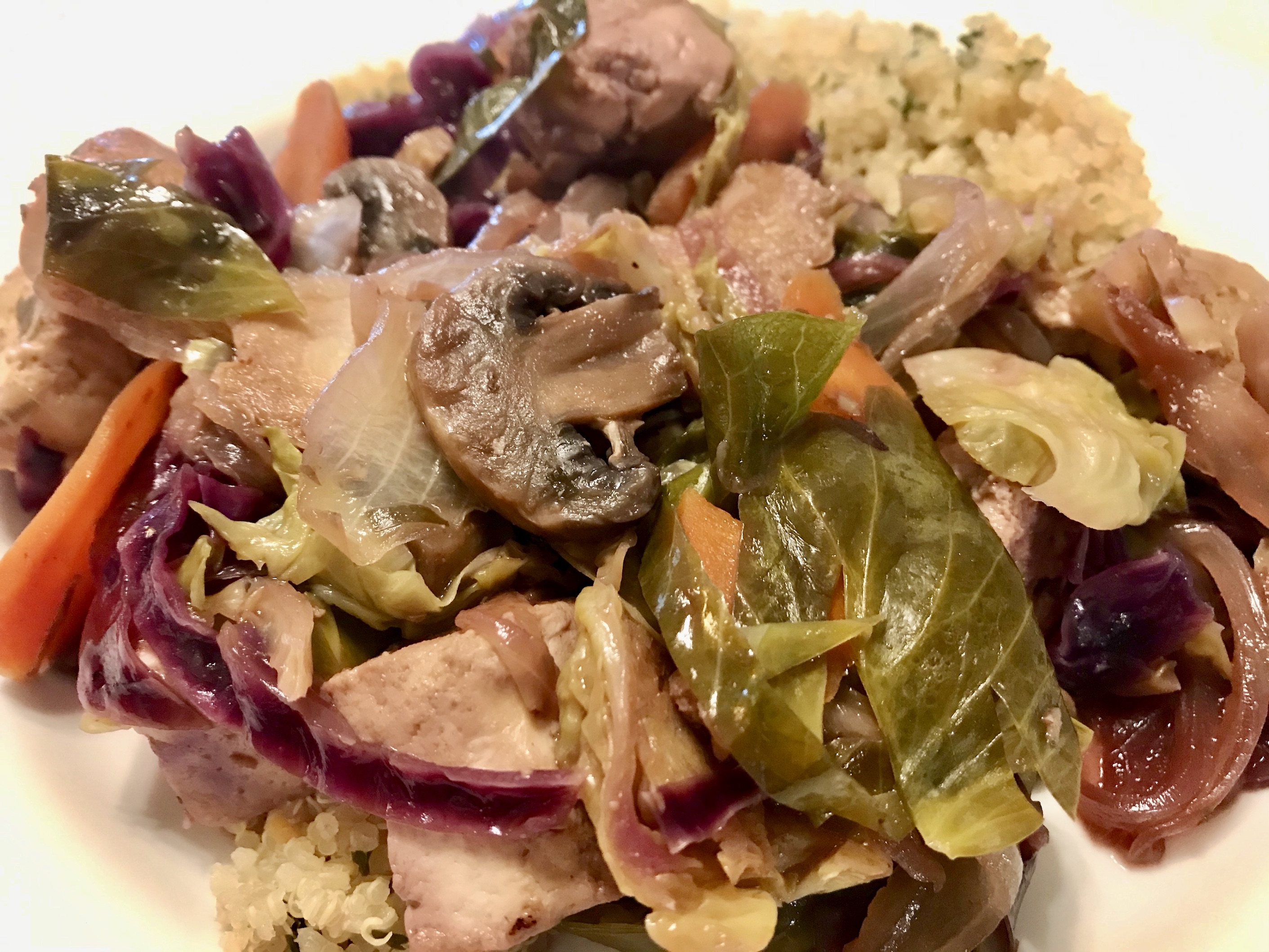Kudzu Root Healing Tea Remedies and Culinary Uses
Kudzu Root Healing Tea has been widely used in Japan and China for hundreds of years as a healing remedy for a variety of conditions, including colds and digestive disorders.
Kudzu's roots run deep.
In China, the use of Kudzu Root (Radix Pueraria lobata) has been recorded in material medicas, such as the Shen Nong Ben Cao Jing (Divine Husbandman's Classic of the Materia Medica since the second century.(1)
Similar to the macrobiotic use of Kudzu Root Healing Tea, Ge Gen Tang (Ge Gen formula) is used in Chinese herbal medicine to treat a variety of Wind-Cold and Wind-Heat symptoms, especially when accompanied with a headache, slight fever, achey upper back and neck, and other symptoms as discussed below.
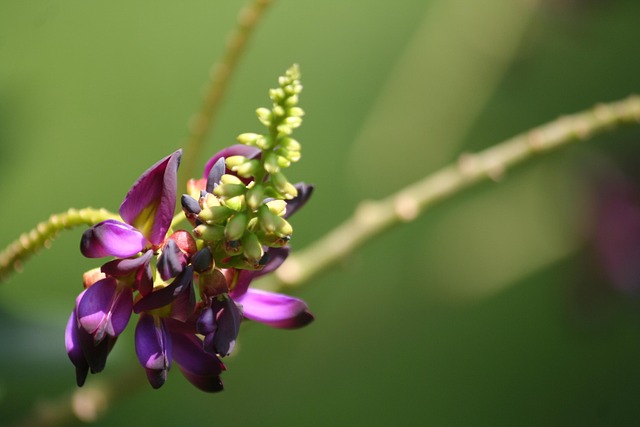 Flowering Kudzu Vine photo courtesy of MariaStone of Pixabay
Flowering Kudzu Vine photo courtesy of MariaStone of PixabayA little more background about kudzu root
Kudzu is a fast growing, sturdy vine native to Japan and Southeast China. It was first Introduced to the United States during the Philadelphia Centennial Exposition in 1876, originally touted as a sturdy vine with sweet smelling blossoms, later promoted as a good plant for protecting riverbanks, and soil erosion control.(2) It was planted abundantly in several Southern states, including South Carolina and Georgia, during the early 1930s.
Well, it worked a little too well.
Kudzu vines grow a foot a day; mature vines can reach 100 feet. It's no wonder that Kudzu has become known as "the vine that ate the South!"(2)
It's unfortunate it has become such a nuisance in several States where it grows prolifically. Kudzu root has many great applications. In addition to the many benefits of Kudzu Root Healing Tea, it has culinary uses, most notably as a food thickener (Japanese arrowroot is a more powdered form of kudzu) for making healthy sauces, gravies and puddings.
While several Southern states could be stumbling over a gold mine of a root, turning it into a healthy local crop is a lengthy, involved process that may not be that easy.
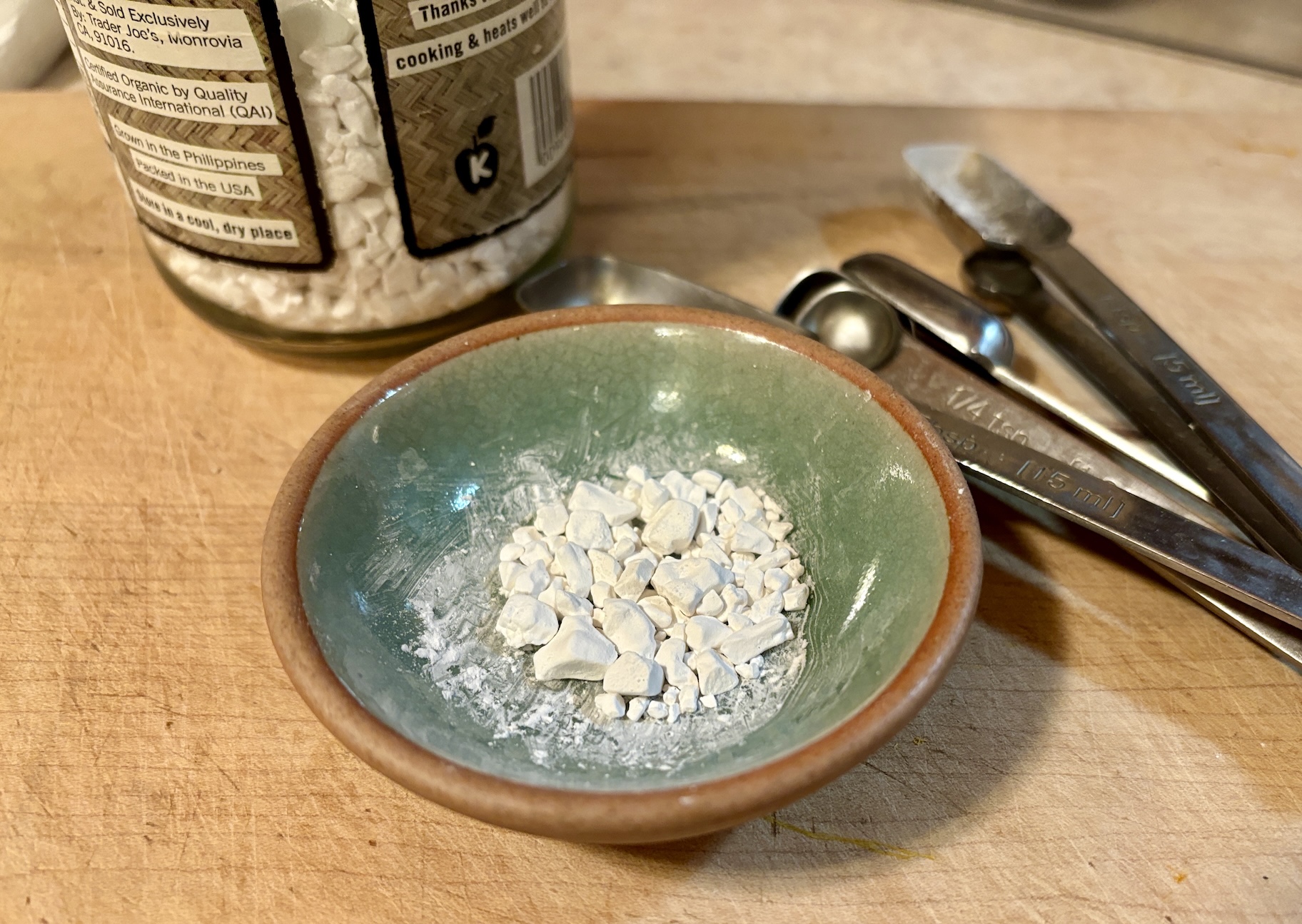
Kudzu Root according Macrobiotics v. Chinese Medicine
According to Michio Kushi (May 17, 1926 - December 29, 2014), founder of the former Kushi Institute, and leading author, teacher and promoter of the modern macrobiotic movement, kudzu root is easily digested, and quickly absorbed by the intestines.
Kudzu Root Healing Tea has a neutral nature, which according to macrobiotic views of Yin and Yang, makes it very balancing. Kudzu root can help regulate body temperature and metabolism, has a neutralizing effect, and benefits all of our organs.(3)
The Chinese Medical Herbology and Pharmacology describes Kudzu root, or Ge Gen (sometimes Gan Ge,) as having a sweet taste, and an acrid, cool nature. The channels it enters are the Spleen / Stomach, or Earth element associated with digestion, or transformation and transmutation of food in traditional Chinese medicine (TCM.)
Although the Chinese herbal medicine classification of kudzu root is slightly different than the Japanese or macrobiotic description, their uses are very similar.
Kudzu Root Healing Tea can be modified in many ways to suit one's condition, just as the accompanying herbs in a Chinese herbal formula using kudzu root (Ge Gen) can harmonize the slightly cooling effects as needed, depending on the symptoms being treated.
Healing Effects of Kudzu Root Healing Tea - Macrobiotic Remedy
Kudzu root is a concentrated source of calories, providing slow burning energy, that is easy to digest. Whether Kudzu Root Healing Tea is drunk as is, or modified with additional ingredients ~ such as Ume Sho Kudzu Tea ~ The main health effects include the following:
- Strengthen and regulate digestion
- Boost vitality
- Reduce (mild) fever
INDICATIONS FOR USE OF KUDZU ROOT HEALING TEA INCLUDE:
- Feeling run down, tired and fatigued
- Acute intestinal disorders, including diarrhea or dsyentery
- Chronic intestinal weakness
- Colds
- Headaches
- Slight fever
- Those who can not eat solid foods
Kudzu Root Healing Tea Recipe
- Bring a cup or a little more of filtered water to a boil.
- Stir 1 teaspoon of kudzu root with 1 or more tablespoons of cool/cold water in a tea mug, and stir or whisk to completely dissolve the kudzu root. It's important to start with cool / cold water. Add more water if needed to fully dissolve.
- Once dissolved, add up to a cup of boiling water. Stir or whisk well.
- Drink as is, or add a little good quality sea salt, or shoyu / naturally brewed soy sauce or tamari.
- For additional health benefits, especially in cases of low vitality, feeling cold, weak, or if having digestive issues, try Ume Sho Kudzu Tea instead.
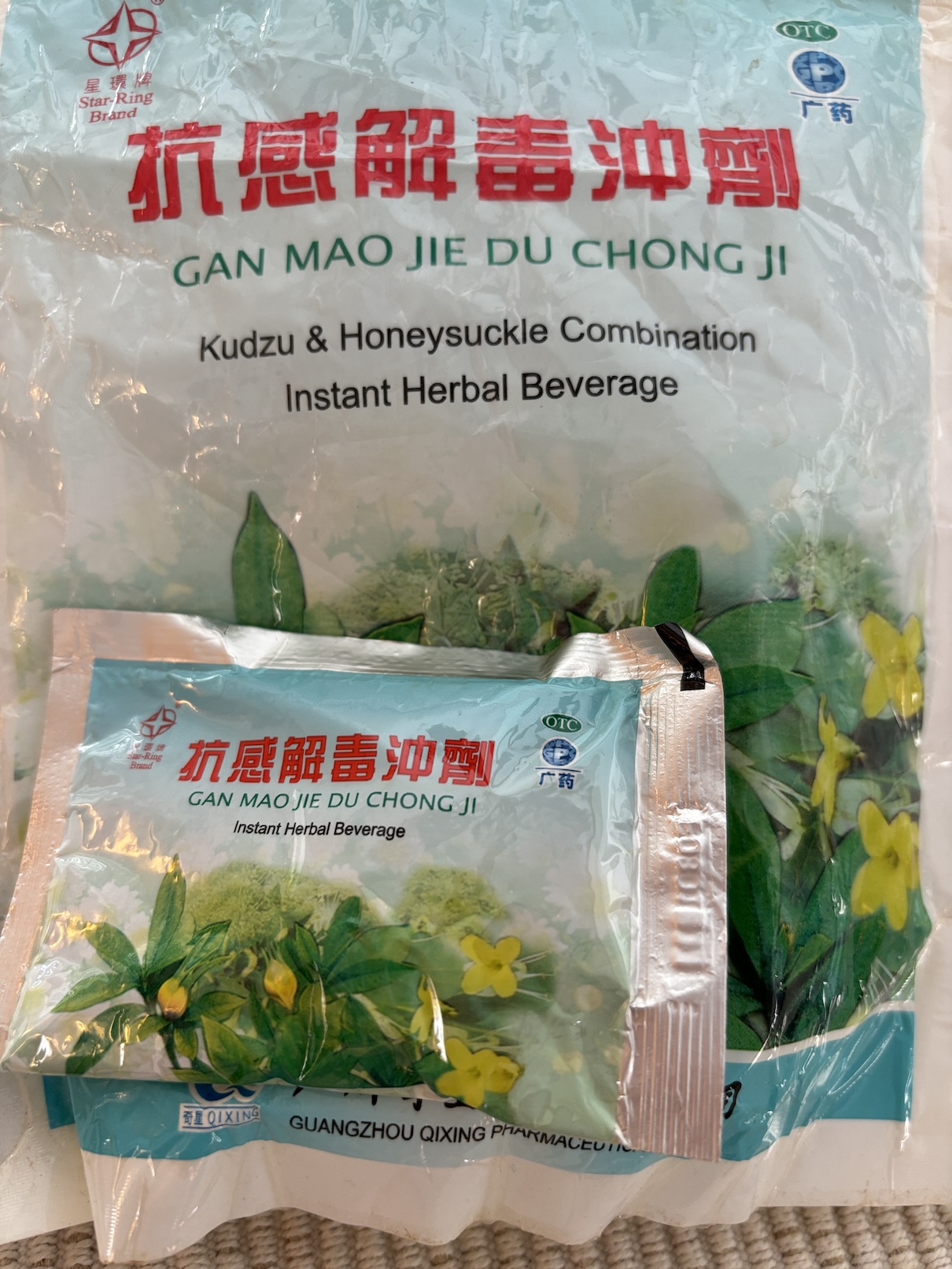 |
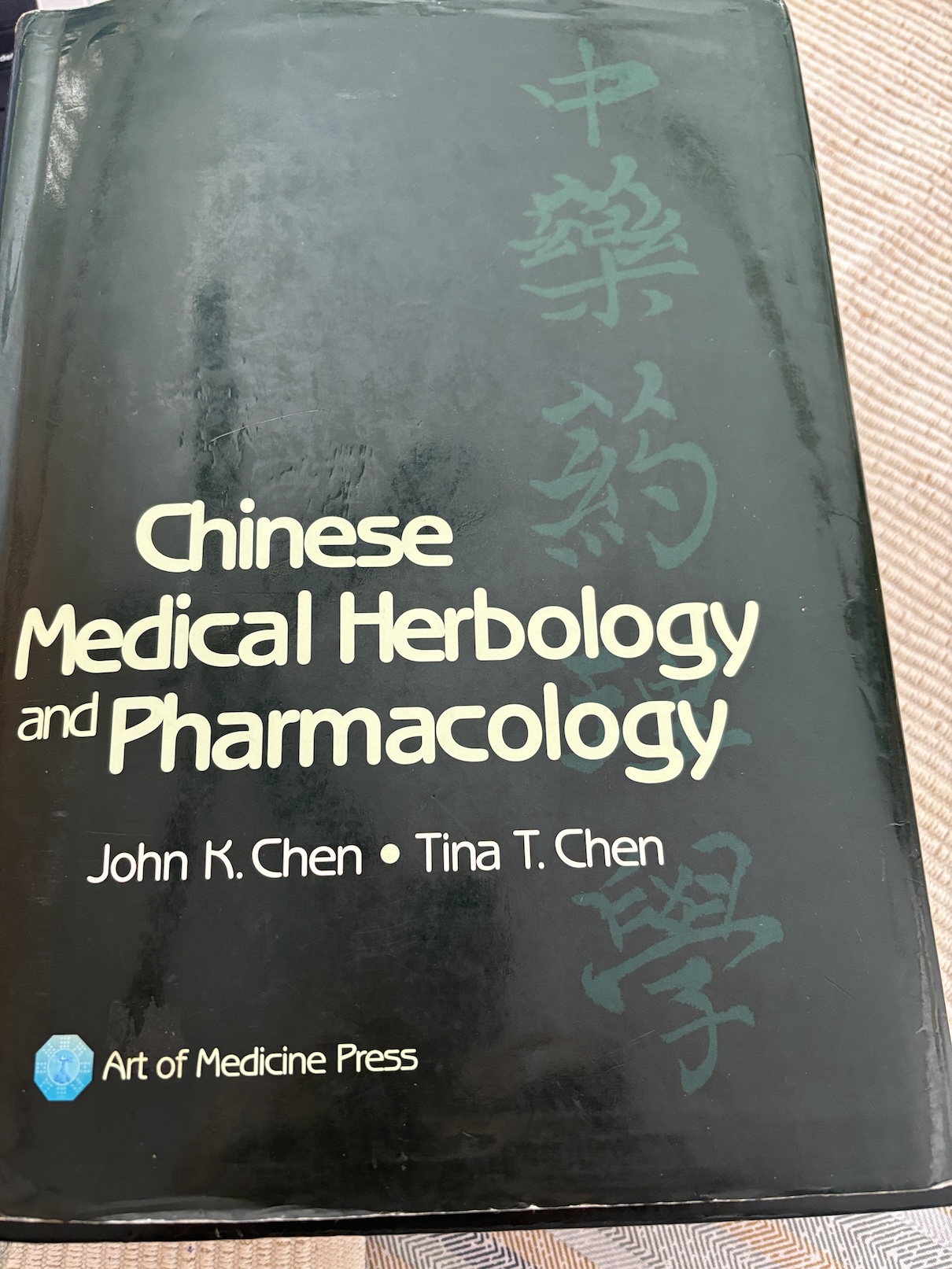 |
Ge Gen Tang - Chinese Herbal Formula for Cold & Flu, Upper Body Aches, and Clearing Heat Toxins
What Westerners refer to as a cold or flu bug, Chinese medicine views as a Wind-Cold invasion, which if not treated at the onset, can turn into a Wind-Heat condition.
Wind-Cold symptoms included chills, and feeling achey, especially in upper back, and back of the neck. At the early onset, one may feel run down, tired, sneeze a lot, have a headache, and an aversion to cold, including cold foods and drinks.
If not treated appropriately, Wind-Cold can morph into Wind-Heat, with more heat signs, including a slight fever, or alternating chills and fever. At this stage, one may feel more irritable or restless, with increased sweating, a sore throat, yellow tongue coating, and increased thirst.
Kudzu Root (Ge Gen Tang) can be used in both cases, modified with herbs to balance either condition.
Ge Gen in combination with Chinese cinnamon (Gui Zhi), which is very warming, can help dispel the wind and cold at the early onset, balancing the slightly cool nature of kudzu root.
Kudzu Root + Cinnamon Tea
Although not as potent as Chinese cinnamon bark, once you feel the onset of a Wind-Cold, especially if you sneeze several times in a row, try adding 1/4-1/3 tsp. ground cinnamon to the Kudzu Root Healing Tea, or simmer a cinnamon stick in the water before adding it to dissolved kudzu root in your mug. Take a hot bath, bundle up, and get some extra rest.
Drink the Ume Sho Kudzu Tea first thing in the morning, and daily until symptoms subside.
Cooling herbs are combined with Kudzu root (Ge Gen) for clearing heat signs.
Gan Mao Ling (tablets) or Gan Mao Jie Du Chong Ji (granulated, prepared by mixing with hot water, usually sweetened), is a classic Chinese herbal remedy that combines honeysuckle, chrysanthemum and other cooling herbs for clearing heat toxins, and generate body fluids.
INDICATIONS FOR USING GE GEN TANG, OR MODIFIED FORMULAS
- Early onset of a Wind-Cold (chills, aversion to cold, upper body aches.)
- Wind-Heat (progression of a cold with fever, sweating, and more heat signs.
- Headaches.
- Diarrhea.
- Thirst
Ge Gen has been studied for its uses in treating hypertension and other cardiovascular conditions. A Real World study was conducted on the effectiveness of Ge Gen Teng to treat common cold symptoms. Results were very favorable, with reductions in headaches, and other common symptoms.
According to Chinese Medical Herbology and Pharmacology, "Ge Gen has recently been used to successfully treat hypertension, headache, stiff neck, tinnitus and dizziness. It is also useful for coronary heart disease, angina pectoris and sudden deafness."
Planetary Herbs, a trusted, reputable company, has a couple supplements with Kudzu Root, including this one used for spasms in the neck and shoulders, tightness, and Alcohol Support.
Culinary Uses for Kudzu Root
Kudzu root can be used as a thickening agent when cooking. Use it with any recipe calling for cornstarch, tapioca flour, white rice flour, or potato starch.
Dissolve a tablespoon or more, depending on the recipe, in 2 tablespoons or so of cool water first, similar to when making Kudzu Root Tea.
For a simple gravy, add a tablespoon of tamari or soy sauce, stir, then add to whatever you are preparing, such as a Shiitake Mushroom Gravy, a Vegetable Stir Fry (recipes in The Macrobiotic Action Plan (paperback or Ebook), and Basic Macrobiotics Menus & Recipes, (available Spring 2025), and the delicious Nishime Vegetables, shown above (recipe in Basic Macrobiotics Menus & Recipes), or any pan sautéed vegetable dish where you want to create a nice glaze or gravy.
Kudzu root can also be used as a thickener when making Apple Sauce, Apple Pie, Sweet Vegan Pumpkin Pie, Sweet Potato Pie, Puddings, and other desserts.
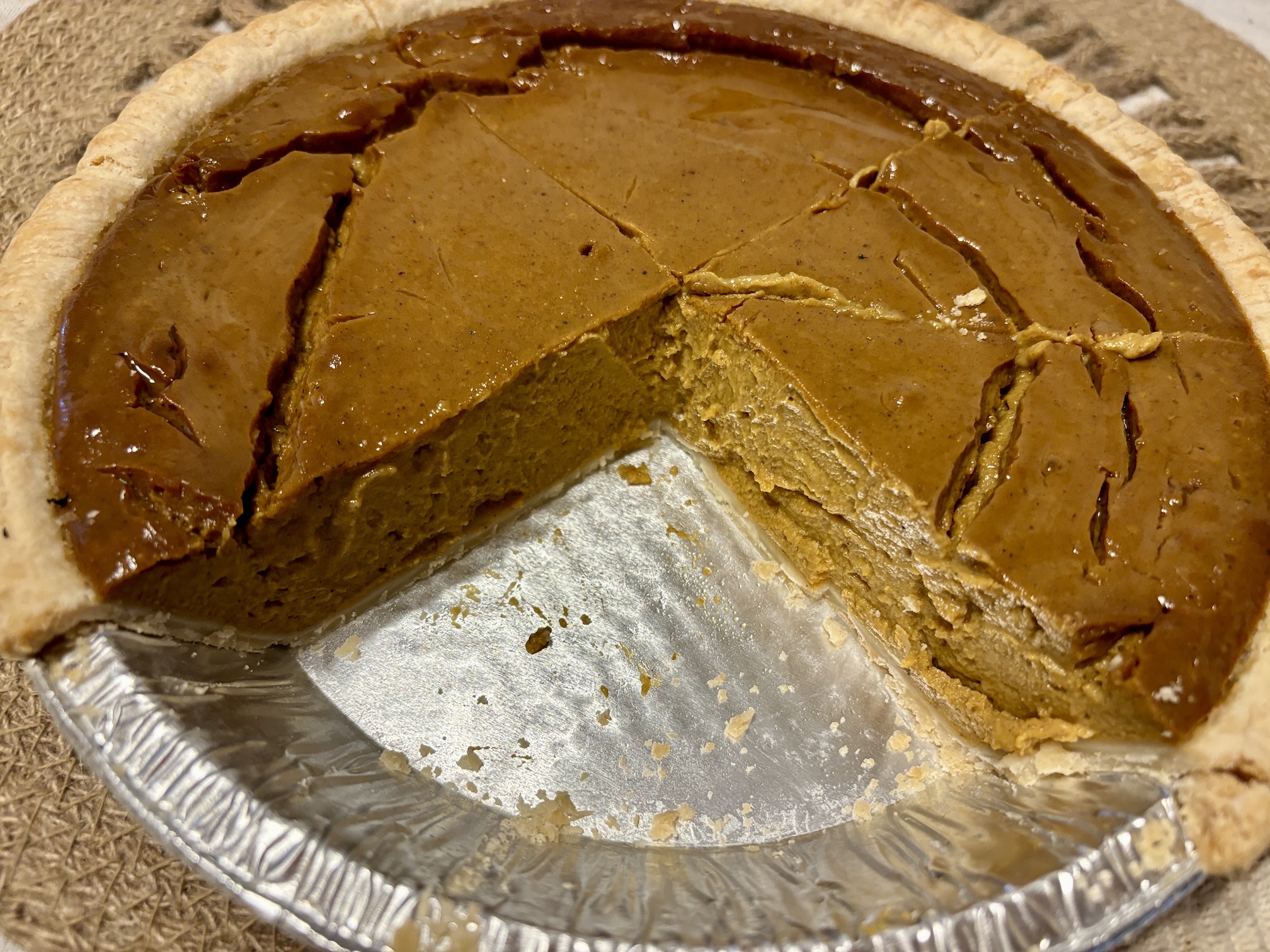 Vegan Pumpkin Pie
Vegan Pumpkin Pie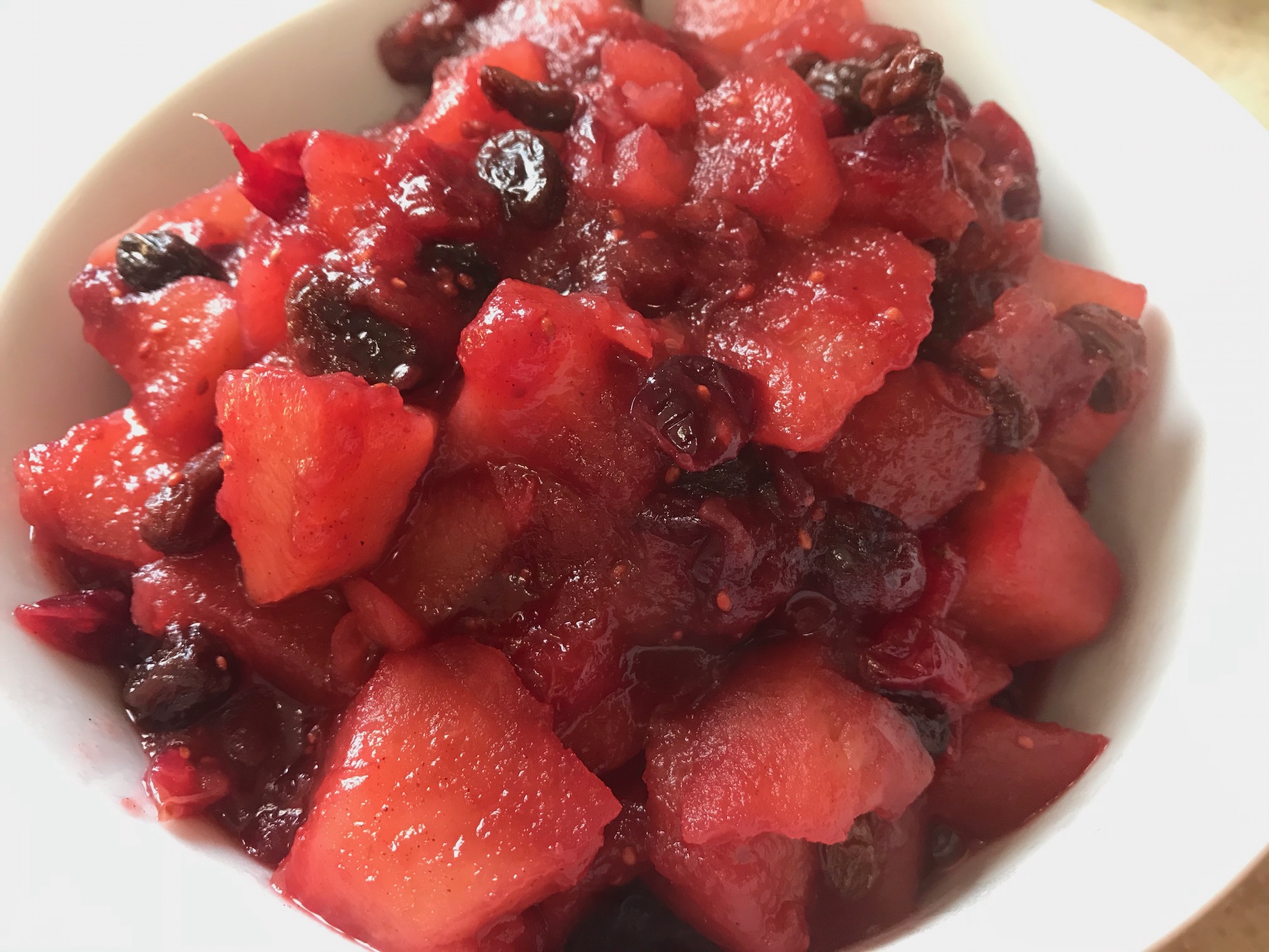 Sugar-Free Apple Cranberry Sauce
Sugar-Free Apple Cranberry Sauce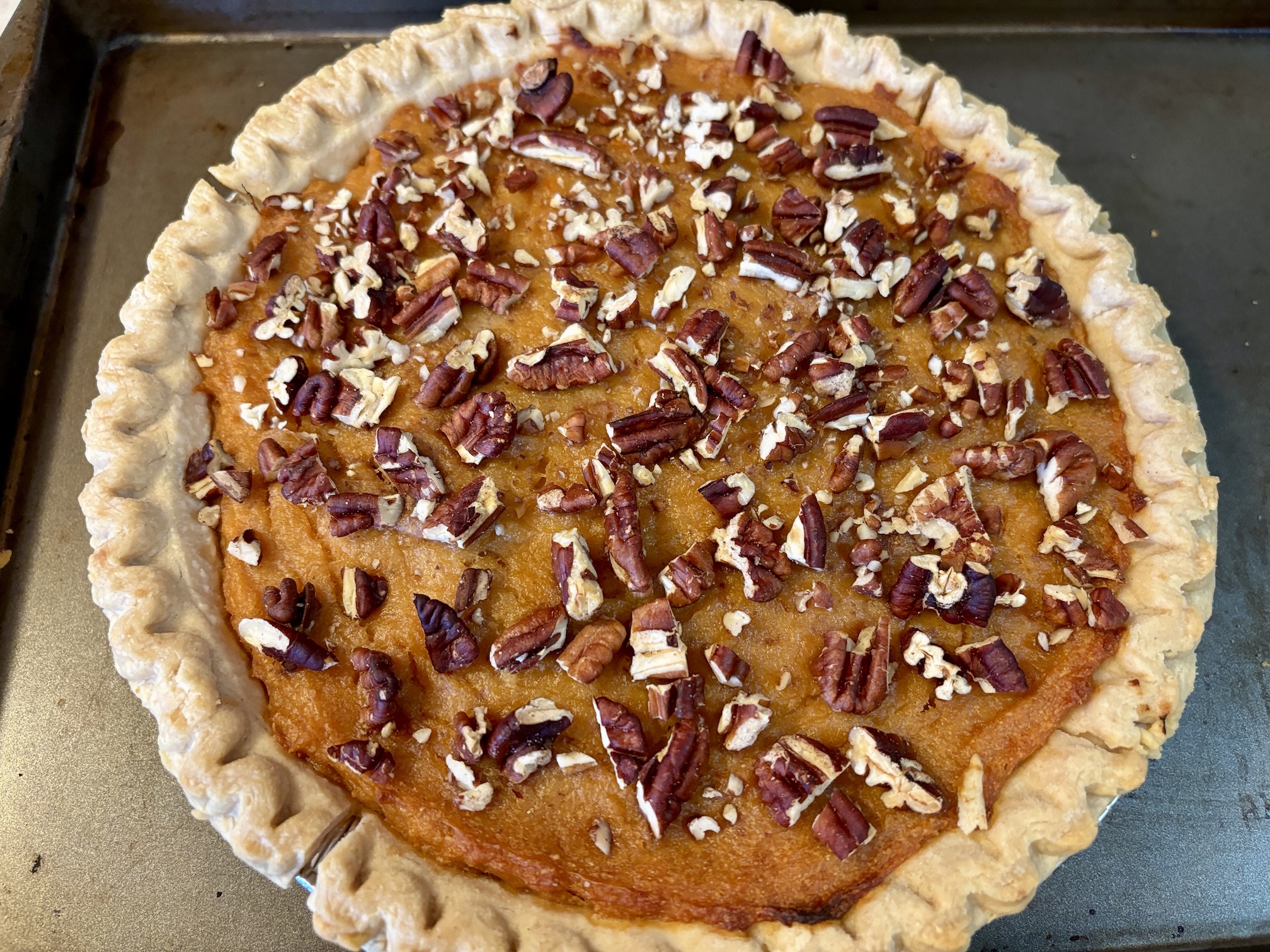 Low-Fat White Sweet Potato Pie
Low-Fat White Sweet Potato PieReferences & More Resources
(1) Chinese Medical herbology and Pharmacology
(2) Kudzu: The Invasive Vine that Ate the South, Nature Conservancy
(3) Macrobiotic Home Remedies, Your Guide to Traditional Healing Techniques, Michio Kushi
Zen Macrobiotics, George Ohsawa
Ge Gen Tang - Showing several options from Amazon for your convenience
Gui Zhi Jia Ge Gen Tang - Chinese formula for treating early onset of colds (EXCELLENT to keep in your arsenal to take when you first start to feel chilled, achey, or run down, especially if sneezing a lot!)
Want to get started eating a healthy balanced vegan macrobiotic diet / or a simple plant-based diet?

